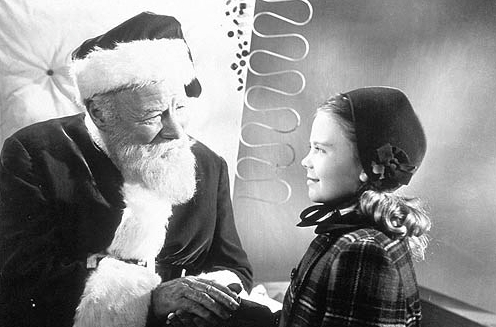
1. Think Before Committing to a Big Purchase on Credit: National Lampoon’s Christmas Vacation (1989)
Who can forget how desperate Clark Griswold is for his year-end bonus, since he’s already put down an advance on a new swimming pool. When his “bonus letter” reveals a membership to a Jelly of the Month club rather than a check, the result is one of the best movie meltdowns ever. Eventually, Clark does convince his boss to give him the bonus, but not before a slew of regrettable shenanigans including a kidnapping and a SWAT team breaking into his house. Moral of the story? Before you take on major credit debt, be sure that you’re on firm financial ground.
2. Be Transparent, and Don’t Underestimate the Value of Your Community: It’s a Wonderful Life (1946)
In this classic film, George Bailey’s savings and loan business is saved from bankruptcy as a result of George’s transparency with his business partners. When the villainous Mr. Potter tries to dissolve the business on bank fraud charges, Bailey’s investors panic, so George presents them with his entire business portfolio, proving how important his loans have become for the citizens of Bedford Falls. Because of his openness, the townspeople see the value that his business holds for the community, and they pool donations to save it.
3. Sometimes You Need to Spend Money to Make Money: Scrooge (1951)
At the start of the film, Ebenezer Scrooge’s miserly ways have left his employees miserable, and his business’ reputation in tatters. He works his most loyal clerk, Bob Cratchit, to the bone, and is reluctant to let him take Christmas Day off. Once the nocturnal spirits show Scrooge the consequences of his penny-pinching ways, he’s moved to change by Christmas morning. His new moves include raising Bob’s wages, covering Tiny Tim’s medical bills, and giving back to the community. In all, both Scrooge’s business and his soul profit from his newfound generosity.
Scrooge Awakens on Christmas Day
4. Never Underestimate the Power of Product Placement: A Christmas Story (1983)
This cult classic had a generation of kids lusting after the Red Ryder BB gun, and the Daisy couldn’t be more pleased. Their air rifle, the object of Ralphie’s obsession, has endured years of success because of it. The TV show and comic book that made the gun popular both ended in 1963, but thanks to the success of the movie, which came out in 1983, Red Ryder is still a hot item in stores today. In a 2003 interview, Joe Murfin, the Vice President of Marketing for Daisy, confirmed that “every time the movie airs [at Christmas time], it is a boost to Red Ryder sales.”
I Want A Red Ryder For Christmas!
5. Putting the Customer First Pays Off in the Long Run: Miracle on 34th Street (1947)
When customers ask a Macys-employed Santa Claus where to find toys, skates, and other gifts, he realizes that Macys doesn’t sell them, so he offers suggestions on where to find them. His boss, along with board, are furious with him for sending customers away. But word gets out about Macys’ customer-centric attitude, and over 500 parents, impressed by the store’s apparent honesty, write to express their gratitude. The board decides to make “putting public service above profit” an official policy of the store. As a result, Macys builds its customer base and enjoys greater profits in the long-term. Take it from Kris Kringle: putting the customer first pays off in the long-term.